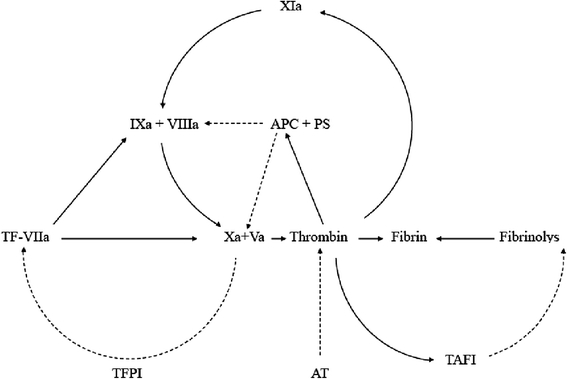Fig. 1.

Blood Coagulation and Fibrinolysis Simplified scheme of coagulation and fibrinolysis. Coagulation is initiated by a tissue factor (TF)—factor VIIa complex that can activate factor IX or factor X, leading to formation of the key enzyme thrombin (factor IIa). Tissue factor–dependent coagulation is rapidly inhibited by tissue factor–pathway inhibitor (TFPI). Coagulation is maintained through the activation by thrombin of factor XI. Through the intrinsic tenase complex (factors IXa and VIIIa) and the prothrombinase complex (factors Xa and Va), the additional thrombin required to down-regulate fibrinolysis is generated by the activation of thrombin-activatable fibrinolysis inhibitor (TAFI). The coagulation system is regulated by the protein C pathway. Thrombin activates protein C in the presence of thrombomodulin. Together with protein S (PS), activated protein C (APC) is capable of inactivating factors Va and VIIIa, which results in a down-regulation of thrombin generation and consequently in an up-regulation of the fibrinolytic system. The activity of thrombin is controlled by the inhibitor antithrombin (AT). The solid arrows indicate activation and the broken arrows inhibition
